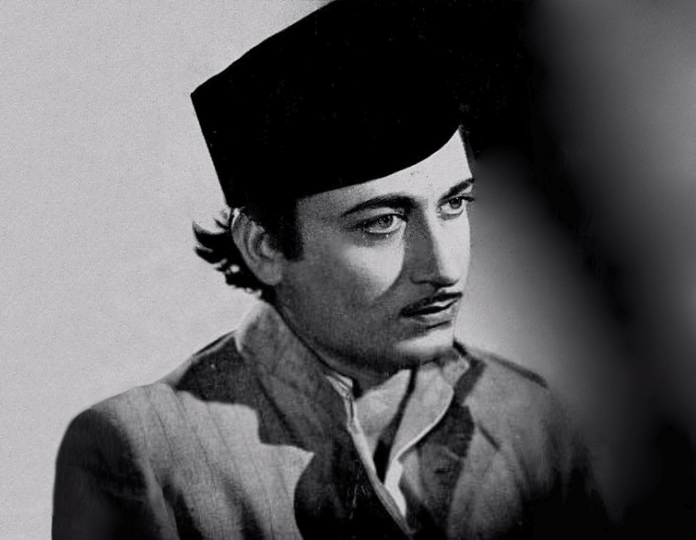One of the most recognisable faces of Hindi cinema, Kamal Kapoor was known for his commendable screen presence and piercing blue eyes. Some of his most famous roles came in films like Raja Aur Runk, Pakeezah, Hanste Zakhm, Deewar, Don, Namak Halaal, Mard, and many more.
Early Life and Career
Kamal Kapoor was born on February 22, 1920, in Peshawar, North-West Frontier Province. He was the maternal cousin of Prithviraj Kapoor, e legendary actor and patriarch of the Kapoor family. His mother was the sister of Prithviraj Kapoor’s mother. Kamal Kapoor was educated at DAV College, Lahore, before moving to Bombay to pursue a film career. His brothers Nandkishore Kapoor and Ravindra Kapoor also pursued acting careers.

He made his debut in the 1946 film Phani Majumdar’s “Door Chalen,” starring Balraj Sahni and Naseem Banu. He then starred in films like “Dak Bunglow,” “Hatimtai,” and “Pardesi Mehmaan.” In Raj Kapoor’s directorial debut, “Aag,” he played Advocate Khanna, the strict father of Kewal (Raj Kapoor). The film explores a young man’s passion for theater, despite the opposition from his authoritarian father.
In the 1950s, he starred in films like Phumman (1950), Kashmir (1951), Sabz Baag (1951), Insaan (1952), Jaggu (1952), Ameer (1954), Khaibar (1954), Ehsan (1954), Miss Coca-Cola (1955), Jalti Nishani (1955), Insaaf (1956), Khuda Ka Banda (1957), Laxmi (1957), Aakhri Dao (1958), Mujrim (1958), Phir Subha Hogi (1958), and Lal Quila (1960).
Kamal Kapoor As Villain
His early years saw him working as a protagonist, but it was his transition to playing a villain that marked his enduring legacy. Kapoor’s versatility as an actor was evident in the wide array of characters he portrayed. From the Public Prosecutor in “Shaheed (1965),” Nawab Zafar Ali Khan in “Pakeezah (1972),” Narang in “Don (1978),” Seth Ghanshyamdas in “Nastik (1983),” Dhaaga sahab in “Meri Jung (1985),” to General Dyer in “Mard (1985),” he played many memorable and fan favourite roles. His blue eyes became a trademark feature, distinguishing him from others.
In Kamal Amrohi’s Pakeezah (1972), Kamal Kapoor plays Nawab Zafar Ali Khan, the admirer of Sahib Jaan. His brief but impactful role as the Nawab infatuated by Meena Kumari became memorable for its intensity. The film’s lavish production and Meena Kumari’s iconic performance overshadowed other characters, yet Kamal’s presence added authenticity to the period setting. The closeup of his eyes in the song Chalte Chalte became an iconic image for the emotions he shows.
Despite not finding success as a lead actor, Kapoor’s shift to character roles cemented his place in the industry. His filmography is extensive, with around 200 films in Hindi, Punjabi, and Gujarati languages.
Later Work
Directed by Chandra Barot, the action thriller Don (1978), casts Kamal as Narang, a cunning smuggler. His cold, calculating demeanor opposite Amitabh Bachchan’s creates a memorable antagonist. The film’s impressive cast, fast-paced narrative and iconic dialogues, paired with Kamal’s menacing performance, made it a cult classic. Narang remains one of Hindi Cinema’s defining villain roles. In the action-comedy Namak Halaal (1982) directed by Prakash Mehra, Kamal plays Sanyal, a scheming villain. His performance balances menace and subtlety, complementing Amitabh Bachchan’s comedic hero.
Kamal Kapoor shared the screen with Amitabh Bachchan in many films. Some of their most memorable films include in Deewaar (1975), Amar Akbar Anthony (1977), Nastik (1983), Mard (1985), Toofan (1989), Indrajeet (1991), and many more. Kamal’s villainous roles opposite Bachchan’s heroic characters created iconic confrontations,
Some of his other notable films include Reshmi Rumal (1961), Ek Musafir Ek Hasina (1962), Johar-Mehmood in Goa (1965), Jab Jab Phool Khile (1965), Taqdeer (1967), Raaz (1967), Raja Aur Runk (1968), Mastana (1970), Sachaa Jhutha (1970), Dastak (1970), Johar Mehmood in Hong Kong (1971), Mehboob Ki Mehndi (1971), Seeta Aur Geeta (1972), Gora Aur Kala (1972), Lalkar (1972), Hanste Zakhm (1973), Black Mail (1973), Chor Machaye Shor (1974), Khel Khel Mein (1975), Do Jasoos (1975), Hum Kisise Kum Naheen (1977), Bin Phere Hum Tere(1979), Katil Kaun (1980), Sangdill (1981), Dulha Bikta Hai (1982), Kachche Heere (1982), Sanam Teri Kasam (1982), Humse Hai Zamana (1983), Hiraasat (1987), Allah Rakha (1986), Daata (1989), Aakhri Sanghursh (1997) and many more.
Personal Life and Legacy
Kamal Kapoor’s acting process relied on his commanding physical presence and disciplined preparation. Standing tall with sharp features, he naturally suited authoritative roles, whether as a patriarch or villain. His early training in theater, likely influenced by Prithviraj Kapoor’s Indian People’s Theatre Association (IPTA), emphasized clear diction and expressive gestures.
Kapoor married his wife Suman Devi in 1945, and together they have five children: three sons—Kapil, Sajeev, and Amir—and two daughters. His younger daughter, Madhu married filmmaker Ramesh Behl and is the mother of Goldie Behl.
Kapoor’s legacy is carried on through his family, with his son Kapil Kapoor being a scholar and writer on Indian intellectual traditions. His other son, Sajeev Kapoor, is a writer working in films.
Kamal Kapoor passed away on August 2, 2010 at the age of 90 in Mumbai.
Kamal Kapoor on IMDB